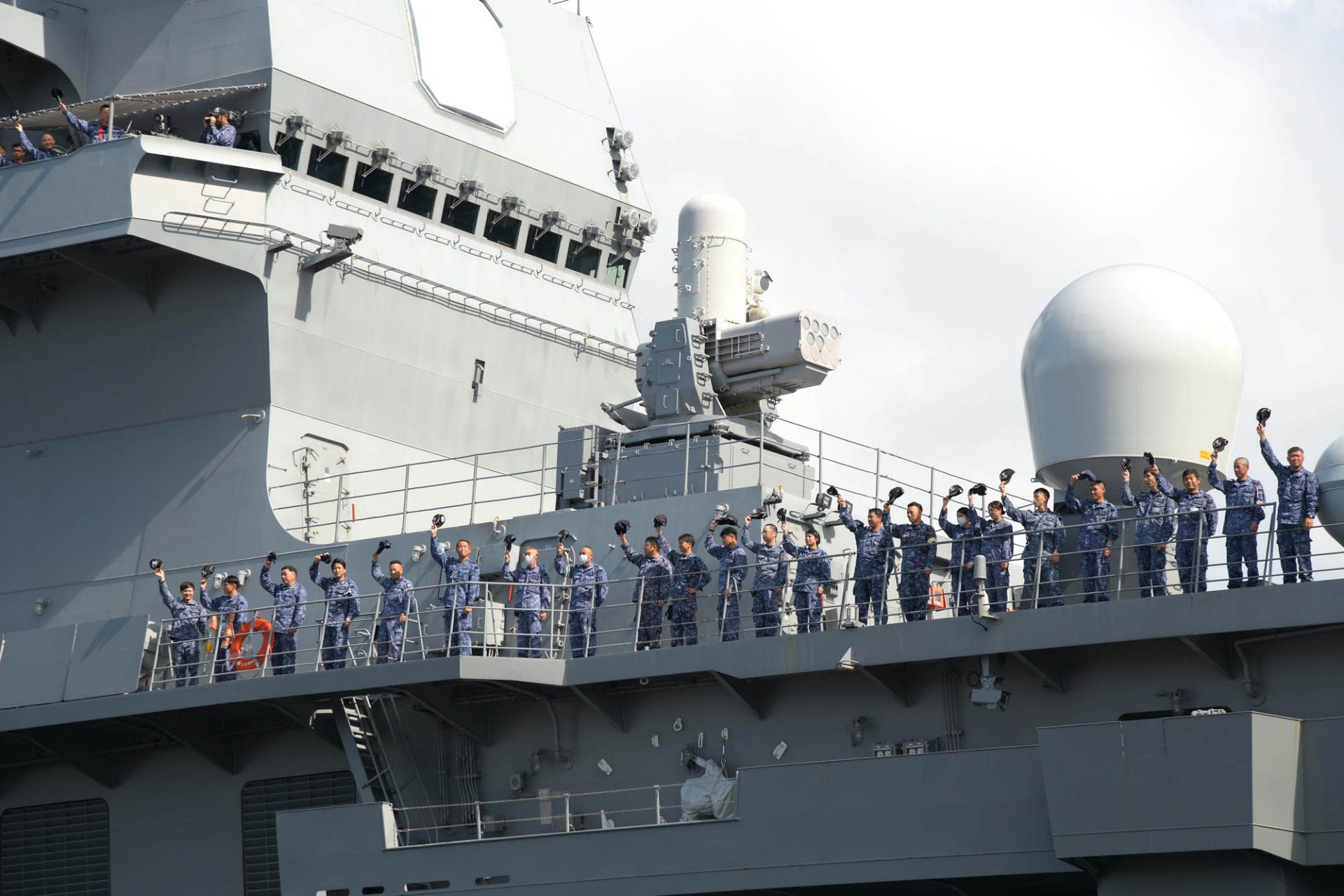Breaking News
Japanese carrier Kaga departs for Indo-Pacific deployment and F-35B trials.
According to information published by the Japanese MoD on September 17, 2024, the helicopter carrier Kaga departed from Kure Naval Base in Hiroshima Prefecture, heading towards the waters off San Diego, California. The vessel set sail to participate in the Indo-Pacific Deployment 2024 (IPD24).
Follow Army Recognition on Google News at this link

Izumo-class JS Kaga departing from Kure. (Picture source: Japanese MoD)
In addition to its role in IPD24, the Kaga is scheduled to conduct shipboard operational trials of the F-35B Lightning II fighter aircraft while off the coast of San Diego. These trials aim to integrate the F-35B's short takeoff and vertical landing capabilities with the ship's operations.
Background
The Japan Maritime Self-Defense Force (JMSDF) is undergoing significant modernization to address emerging security challenges in the Asia-Pacific region. Central to this effort is the transformation of the JS Kaga (DDH-184), originally an Izumo-class helicopter destroyer, to operate the Lockheed Martin F-35B Lightning II Joint Strike Fighter.
Commissioned in 2017, the JS Kaga is one of two Izumo-class helicopter carriers—the largest ships in the JMSDF fleet. Initially designed for anti-submarine warfare and humanitarian assistance and disaster relief operations, the vessel is undergoing modifications to accommodate fixed-wing aircraft. These changes involve reinforcing the flight deck to withstand the intense heat generated by F-35B engines during vertical take-offs and landings, as well as altering internal layouts to support the new aircraft.
The F-35B is the short take-off and vertical landing (STOVL) variant of the fifth-generation stealth multirole fighter. Integrating this aircraft onto the JS Kaga provides several strategic advantages. It enhances Japan's air power projection by extending operational reach beyond the limitations of land-based aircraft.
The ability to deploy F-35Bs from the JS Kaga strengthens Japan's deterrence posture against regional threats, particularly concerning North Korea's missile program and China's maritime activities in the East and South China Seas. This combination allows for a more flexible and rapid response in various scenarios, from territorial defense to contributions in international security efforts.
China has expressed concern over Japan's naval expansions, which could potentially lead to an arms race in the region. Domestically, the move raises debates regarding Japan's pacifist constitution. While the government maintains that these developments are for self-defense purposes, some domestic and regional actors view them as a shift towards a more offensive military posture.


























